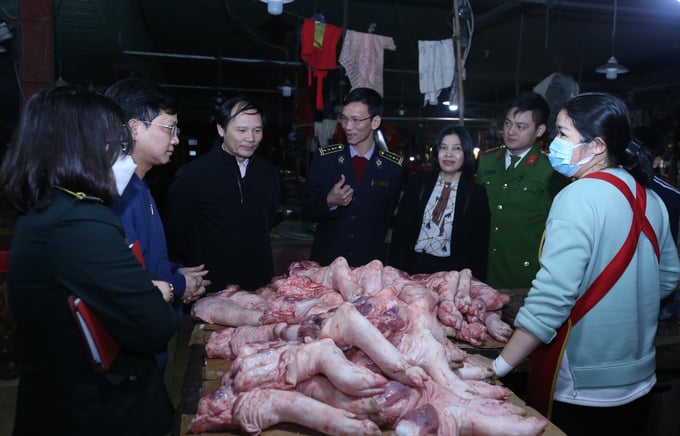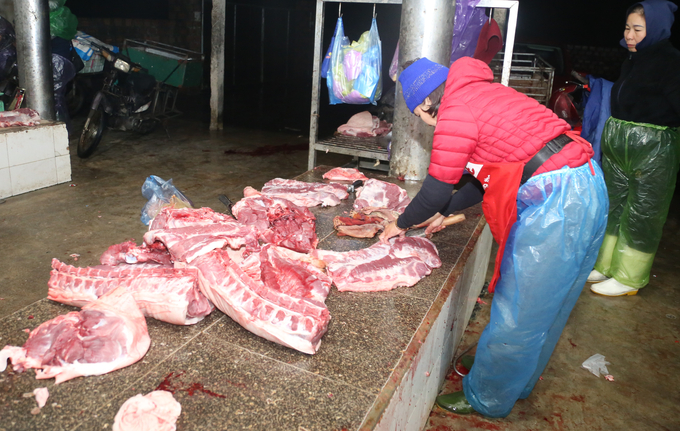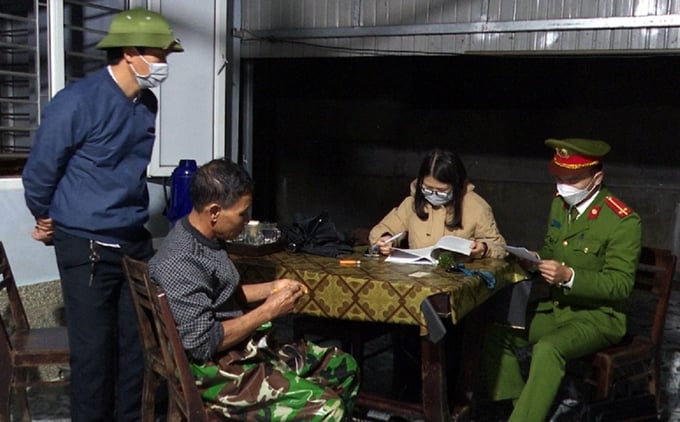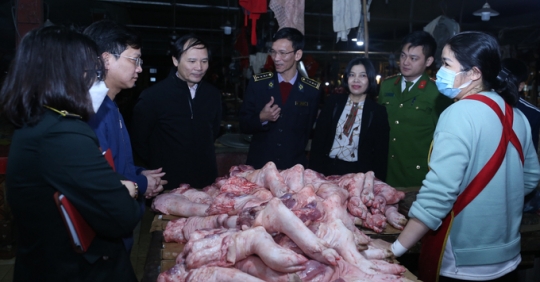
The interdisciplinary mission, led by the director of the Ha Tinh Ministry of Agriculture and Rural Development, inspected slaughter activities at slaughterhouses in the province.
On the morning of December 28, the reporter accidentally met Mr. Tran Hung, head of the Ha Tinh Animal Husbandry and Veterinary Division, at the gate of the headquarters on Tran Phu Street. His face was listless after joining an interdisciplinary mission for more than a week to inspect cattle slaughter in slaughterhouses day and night.
He said near Tet, the number of cattle entering the slaughterhouses doubled and tripled on weekdays. Therefore, inspection and control always come first. The aim is to provide food that is safe and hygienic for consumers and to prevent the occurrence and spread of diseases.
In Ha Tinh city, the number of cattle entering concentrated slaughterhouses has increased by 40-45% in the past 4 days compared to normal days, reaching from 50 to 60 animals/oven/day.
Nguyen Tri Giang, a quarantine officer at the cattle slaughterhouse in Tan Giang Township, Ha Tinh City, said that due to the sudden increase in the number of cattle entering the slaughterhouse, his job duty is very stressful and almost impossible to last all day and night.
“Every day I have the duty to check the valid quarantine certificate for buffalo and cows imported from outside the province. At the same time, continuously observe and monitor the health of animals before slaughter,” Mr. Giang said.
In general, 5 slaughterhouses in Cam Xuyen district have to work at full capacity nowadays to meet the increased consumer demand during Tet. Slaughterhouse owners said that the number of cattle entering the oven increased day by day and reached the level of 50-70 animals/oven/day. Every day, the district quarantine officer conducts inspections from when cattle enter the barn to when the finished meat is exported to market.

Meat products that are placed on the market without a quarantine mark are severely punished.
Mr. Hoang Cu, owner of Cam Loc Slaughter Plant (Cam Xuyen District), said the plant has been using a hanging slaughter process for some time. This form of slaughter is more productive and efficient than traditional slaughter and ensures food safety and hygiene. At present, the number of cattle entering the slaughterhouse has reached 35-40 head/night. Imported cattle are raised, health checked and slaughtered according to correct procedures.
In the area where there is a localized outbreak of dermatitis in buffalo and cows in Loc Ha District, disease control at the slaughterhouse is a particular concern of the authorities and farm owners.
The owner of the slaughterhouse in Binh An township, Loc Ha district, said the number of cattle entering the slaughterhouse had increased from 40 to 60 head a day. Imported cattle are kept health checked according to the procedure; when carrying out slaughter under the supervision of specialized personnel.
According to Mr. Phan Van Thanh, deputy chief of the district’s agriculture department, Loc Ha is a place where a large number of buffalo and cows in and out and there is an outbreak of skin inflammation, so as of the end of December 2022 , the district has actively developed a plan to plan and organize the control of compliance with the provisions of the Disease Prevention and Control Act and production, business, slaughter, trade, transportation of livestock, poultry and livestock and poultry products locality table in front , during and after Tet.
At the same time, instruct the administration of the markets to coordinate closely with the veterinary authority to inspect beef products before they are put on the market, and decided not to put on the market products without the mark of slaughter control.

The functional force is also “strong hand” in cases of spontaneous cattle slaughter at home for companies.
Loc Ha District is also increasing control of spontaneous slaughter activities at home to provide deterrence and ensure veterinary regulations and food hygiene and safety issues.
In December 2022 alone, the municipality issued a decision imposing a fine of VND 14 million for 2 counts of animal slaughter at a location not approved by a relevant state agency. The district and municipal authorities will also carry out unscheduled checks in the coming period to ensure safe slaughterhouse operations.
Mr. Tran Hung, Director of Ha Tinh Animal Husbandry and Veterinary Sub-department stressed: During Tet, the number of cattle transported, traded, slaughtered and traded in the province increased very sharply. Therefore, the professional sector proposes that the provincial, district and local intersectoral delegations continue to strictly control the kiln slaughtering activities and the trafficking of human lives; Small and special slaughtering in households and commercial establishments without permission is strictly prohibited.
Slaughterhouse owners are responsible for complying with regulations on veterinary quarantine and slaughter procedures to ensure food hygiene and safety in order to bring high quality and safe meat products to market. While Tet, the demand for meat products is increasing, people should also feel to protect their own health, be careful when buying and selling, should only choose and use beef meat from the market, local residents, supermarkets, quarantine stamps, quarantine slips, etc.

